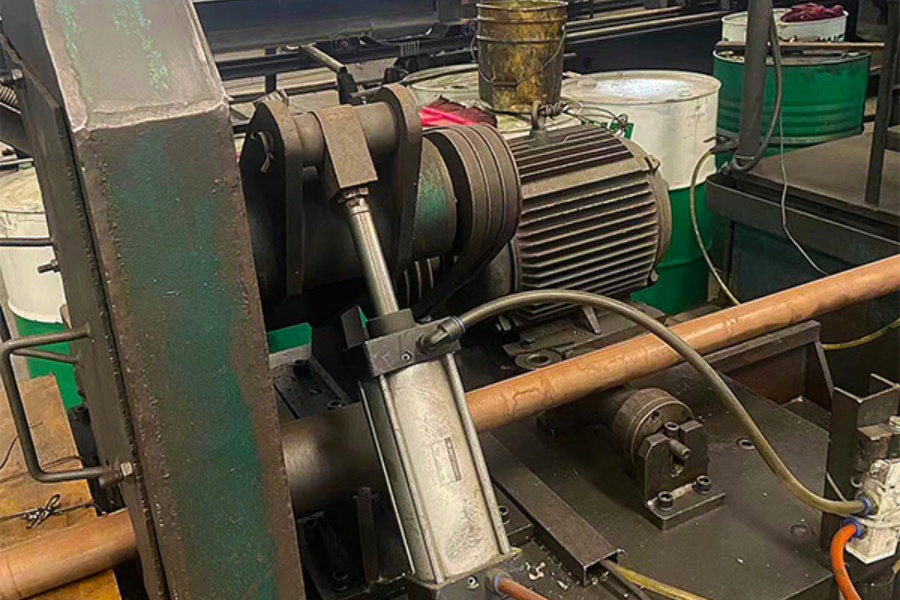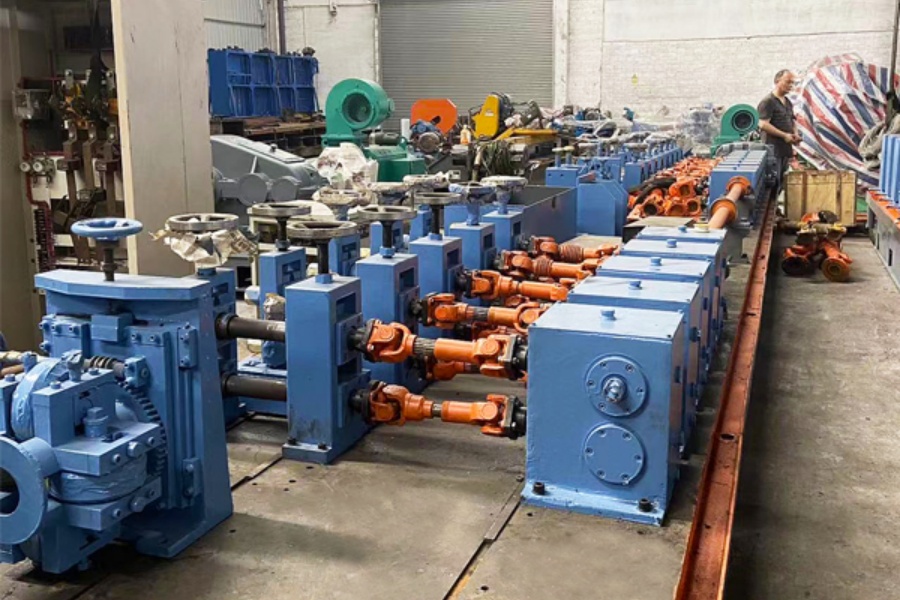In industrial production, welding pipe equipment plays a vital role. For used tube mill, after renovation, its performance and reliability need to be ensured through a series of rigorous tests and verifications. This article will introduce the testing and verification process after used tube mill renovation in detail, especially no-load test, load test and continuous optimization. 1. No-load test
1. No-load testThe no-load test is the first test performed after the used tube mill is refurbished. It is designed to check the smooth operation of each component of the equipment and eliminate any potential assembly errors. The following are the main steps and precautions for no-load test:
Component operation inspection: Start the equipment and observe the operation of each component (such as motor, transmission system, control system, etc.). Ensure that they can start, run and stop smoothly without abnormal noise or vibration.
Instrument calibration: Check whether the various instruments of the equipment (such as ammeter, voltmeter, pressure gauge, etc.) are accurately calibrated. This is crucial for subsequent performance testing and load testing.
Functional test: Test whether the various functions of the equipment are normal by operating the control panel. For example, check whether the adjustment range of welding current and the setting of welding speed are in line with expectations.
Assembly error elimination: During no-load operation, pay special attention to checking the assembly of the equipment. Any minor assembly error may cause unstable operation of the equipment or cause safety hazards.
2. Load testLoad test is a key link to simulate actual production conditions and test the maximum load capacity of used tube mill. Through load test, the stability and reliability of the equipment under long-term high-load operation can be verified. The following are the main steps and precautions for load test:
Load type determination: Determine the appropriate load type according to the actual use of the equipment. For example, for welding pipe equipment, it may be necessary to simulate welding pipes of different diameters and materials for welding tests.
Load level setting: Set a series of different levels of load for testing, gradually increasing from low load to maximum load. This can comprehensively evaluate the performance of the equipment under different load conditions.
Actual production condition simulation: During the load test, try to simulate actual production conditions. For example, consider the setting of parameters such as welding speed, wire feeding speed, shielding gas flow rate, and preheating and cooling of welding materials.
Key parameter verification: Verify whether key parameters such as welding speed, forming accuracy, cutting error, etc. meet the standards. These parameters directly affect welding quality and production efficiency, so it is necessary to ensure that they are within an acceptable range.
Performance evaluation: Record various performance indicators during the test, such as welding current, voltage stability, weld appearance quality, etc. Evaluate the overall performance of the equipment based on the test results.
3. Continuous optimizationAccording to the results of the load test, it may be necessary to fine-tune the parameters of the used tube mill to ensure its stability and consistency. The following are the main steps and precautions for continuous optimization:
Parameter adjustment: According to the test results, fine-tune the equipment's welding current, voltage, welding speed, wire feeding speed and other parameters. These adjustments are intended to improve welding quality and production efficiency while reducing energy consumption and loss.
Equipment monitoring: After adjusting the parameters, continuously monitor the operation of the equipment. Through sensors and data acquisition systems, real-time monitoring of key parameters in the welding process, such as current, voltage, welding speed, etc.
Data analysis: Process and analyze the monitoring data, extract characteristic parameters, and identify anomalies and fluctuations in the welding process. According to the analysis results, further adjust the equipment parameters or optimize the welding process.
Preventive maintenance: Develop a preventive maintenance plan based on the equipment's operating conditions and test results. Regularly maintain the equipment to extend its service life and reduce downtime.
Personnel training: Provide professional training to operators to improve their skills and operational standards. This helps reduce the impact of human factors on equipment performance and welding quality.
 The testing and verification of the refurbished used tube mill is an important part of ensuring its performance and reliability. Through steps such as no-load testing, load testing, and continuous optimization, the performance and stability of the equipment can be fully evaluated, and corresponding adjustments and optimizations can be made based on the test results. This not only helps to improve welding quality and production efficiency, but also helps to reduce energy consumption and losses, providing strong support for the sustainable development of the enterprise.
The testing and verification of the refurbished used tube mill is an important part of ensuring its performance and reliability. Through steps such as no-load testing, load testing, and continuous optimization, the performance and stability of the equipment can be fully evaluated, and corresponding adjustments and optimizations can be made based on the test results. This not only helps to improve welding quality and production efficiency, but also helps to reduce energy consumption and losses, providing strong support for the sustainable development of the enterprise.






